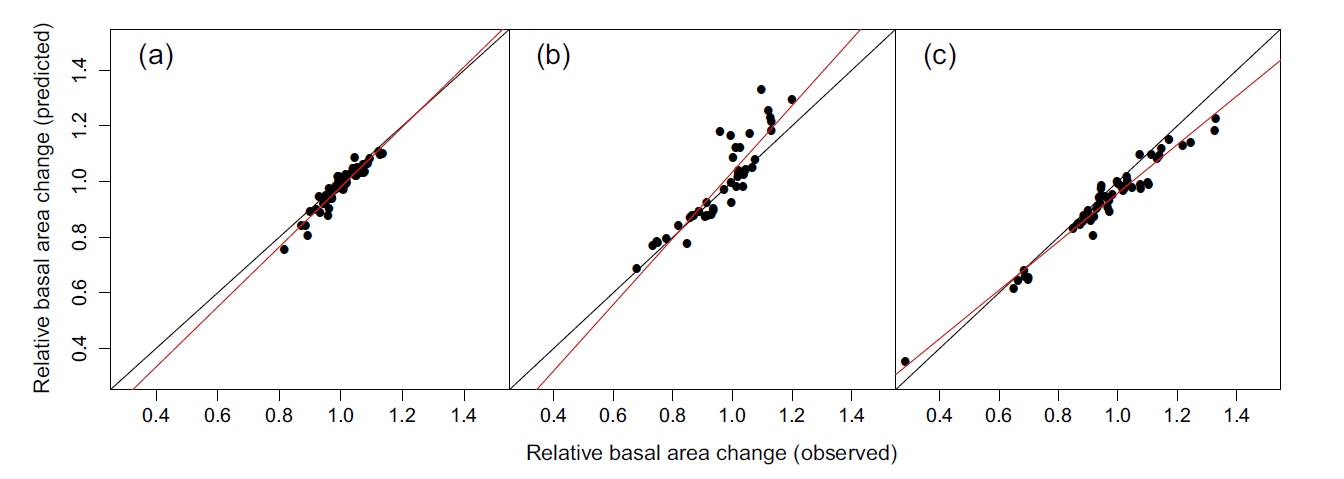Learning about resilience from long-term forest experiments
In a recent paper published in Forest Ecology and Management we asked what can be learned about resilience from a model-based reanalysis of long-term thinning trials.
Understanding and quantifying the resilience of forest ecosystems is an important current issue of research (see for instance here and here). Experimentation is a prime scientific tool to understanding complex phenomena like resilience in ecosystems. However, forests are slow systems, requiring long time series to deduce their responses to perturbations. And due to the fact that resilience science has entered the global research agend only recently, there are no long-term resilience experiments in forest ecosystems currently available for analysis. New experiments are initiated, inter alia in the RESIN project - see here, but it will be a while until we'll be able to glean insights from them.
Nonetheless, there is a long tradition of experimental research in forestry (see for instance here). In a recent paper published in Forest Ecology and Management we thus had the idea to mine this wealth of experimental data for resilience research. Specifically, we focused on long-term thinning trials, which can be seen as a form of perturbation experiment, tracking the response of forests to a wide range of removal frequencies and intensities. The advantage of using trial data is that we can utilize the full inferential power of a proper study design, i.e. we have replicates for each perturbation, frequent remeasurements are available, and the documentation is good (thanks to the hard work of our colleagues at BFW).
Our first goal was to test whether the applied model - iLand - was able to reproduce the observed responses to the wide gradient of perturbations exposed in three thinning trials in Norway spruce forests running since the 1960s in Austria. The results show that the simulated response to thinnings was well in line with observations over all three sites (here representing an elevation gradient from the montane to the submontane elevation belt - left to right in the figure below).

Subsequently, we reanalyzed all thinning perturbations under current and future climate conditions using iLand. Specifically we focused on engineering resilience, i.e. the ability of a system to recover from a perturbation. We found that - not unexpectedly - resilience was strongly determined by stand characteristics such as stand age and basal area. Furthermore, we found that also climate influenced resilience, and that the effect of climate change was strongly context-dependent. At the cool and wet high elevation site Eibiswald (1250 m asl), climate warming increased the resilience, while at the warm and dry low elevation site Ottenstein (540 m asl) resilience decreased under climate change. We found a threshold around a mean annual precipitation level of approximately 800 mm, below which warming decreases resilience - see figure below.

While we here focused solely on engineering resilience we also compared our indicators to variation-based indicators of resilience, which are often used also in the broader context of ecological resilience. Interestingly, the patterns and trends between the different families of resilience indicators were consistent, highlighting that engineering resilience derived from readily available forestry data can be used to quantify and better understand resilience.